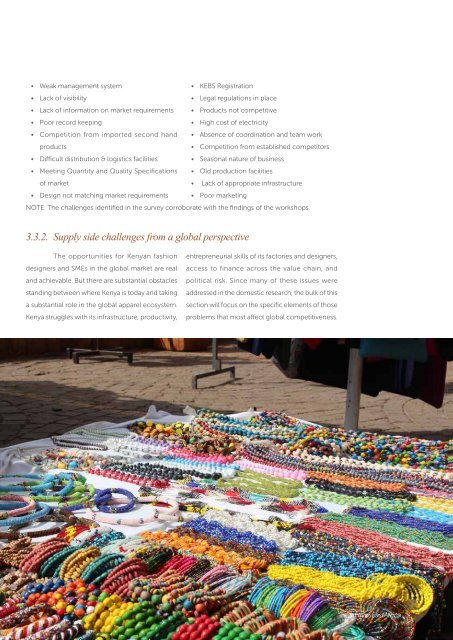Create successful ePaper yourself
Turn your PDF publications into a flip-book with our unique Google optimized e-Paper software.
• Weak management system<br />
• Lack of visibility<br />
• Lack of information on market requirements<br />
• Poor record keeping<br />
• Competition from imported second hand<br />
products<br />
• Difficult distribution & logistics facilities<br />
• Meeting Quantity and Quality Specifications<br />
• KEBS Registration<br />
• Legal regulations in place<br />
• Products not competitive<br />
• High cost of electricity<br />
• Absence of coordination and team work<br />
• Competition from established competitors<br />
• Seasonal nature of business<br />
• Old production facilities<br />
of market<br />
• Lack of appropriate infrastructure<br />
• Design not matching market requirements • Poor marketing<br />
NOTE: The challenges identified in the survey corroborate with the findings of the workshops.<br />
3.3.2. Supply side challenges from a global perspective<br />
The opportunities for Kenyan fashion<br />
designers and SMEs in the global market are real<br />
and achievable. But there are substantial obstacles<br />
standing between where Kenya is today and taking<br />
a substantial role in the global apparel ecosystem.<br />
Kenya struggles with its infrastructure, productivity,<br />
entrepreneurial skills of its factories and designers,<br />
access to finance across the value chain, and<br />
political risk. Since many of these issues were<br />
addressed in the domestic research, the bulk of this<br />
section will focus on the specific elements of those<br />
problems that most affect global competitiveness.<br />
The Kenyan Textile And Fashion Industry Report<br />
33<br />
@HivosEastAfrica


